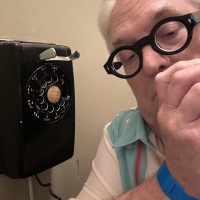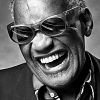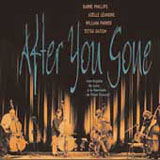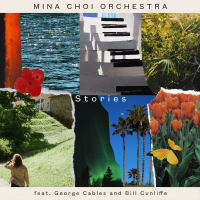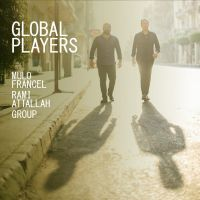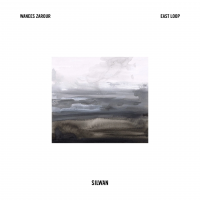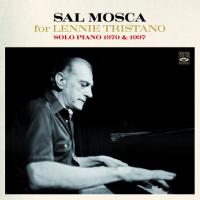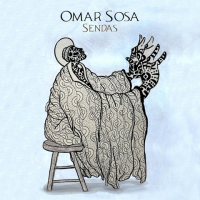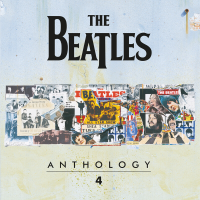Home » Jazz Articles » Extended Analysis » Ray Charles: Ray Charles 1930-2004: Part 3 of 4 (The Soundtracks)
Ray Charles: Ray Charles 1930-2004: Part 3 of 4 (The Soundtracks)
 Taylor Hackford had the dream job of selecting the songs to be used in his movie, Ray , the biopic of singer Ray Charles. Additionally, in his consideration, he had the original item, Mr. Charles, himself for guidance. A Labor of love, 15 years in the making, the movie had its genesis in director Hackford's approaching Charles in 1988 to propose to him directing a movie about the singer's life. What they did not have at the time was the male lead. Who would play Ray Charles? The music was really easy. What actor was to play "RC?" That was the hard part, and for this dispatch from the electrons, beside the point.
Taylor Hackford had the dream job of selecting the songs to be used in his movie, Ray , the biopic of singer Ray Charles. Additionally, in his consideration, he had the original item, Mr. Charles, himself for guidance. A Labor of love, 15 years in the making, the movie had its genesis in director Hackford's approaching Charles in 1988 to propose to him directing a movie about the singer's life. What they did not have at the time was the male lead. Who would play Ray Charles? The music was really easy. What actor was to play "RC?" That was the hard part, and for this dispatch from the electrons, beside the point.
There exists a pathetic and unjustifiable number of Ray Charles's "Greatest Hits." This commercial practice, obviously lucrative, is scholastically a sticky nocturnal emission, clouding the issue of history and true cultural importance. Typically, these collections are assembled based on the prevailing mood of the record-buying public (and what masters the given label has fights to) rather than any artistic merit the recordings may of may not have. Rhino Records, keeper of all things sacred in American Music, has released a soundtrack plus and additional album of music included in the film (and I grant that this is a bit rich) described as "music that inspired the film."
Perhaps better than any label-derived "greatest hits" package, these two soundtrack releases represent the historical importance of Ray Charles better than any other release not otherwise related to another artistic venue. They are drawn from all of Charles's commercial outlets, regardless of license (as one would hope). Taylor Hackford stated in his liner notes that he was grateful that the "RC" did not change any of his [Hackford's] musical choices for the motion picture and offered appropriate alternatives when called upon. In that is where I suspect, the magic lies.
In the Winter of his life, Mr. Charles took the pragmatic view and chose to present his life as it was. The good thing is his music may be considered separately from the man and his life. At the same time, the music cannot possibly be considered without accounting for Mr. Charles's experiences. Forget the trend toward "reality" in today's culture. The life of Ray Charles is reality·Our reality and we shared it all with him...and his music.
The Brass Tacks: Are there any musical surprises in the Ray soundtrack?
No. Of course not...Ray Charles was finished having anything to say regarding American Popular Music after about 1965.
There is nothing wrong with that fact considering that Mr. Charles created an entirely new musical art form, not once, but twice, during his life. It is our fortunate experience as serious music listeners to have had a Ray Charles in our midst. We are not nearly grateful enough for such obvious Grace.
There are three commercial audio releases associated the movie Ray. The first is Ray: The original Motion Picture Soundtrack featuring Original Recordings by Ray Charles. The second is the recently released More Music from Ray: More Music from the film + Music that inspired the Film. And the third is Ray: the Original Motion Picture Score that was composed by Craig Armstrong, who, most recently was responsible for scoring the movie Moulin Rouge. This latter release will not be considered in this article, but is nevertheless worthy of seeking out by Ray Charles's fans.
 Ray Charles
Ray Charles
Ray: The Original Motion Picture Soundtrack
Rhino 76540
2004
This disc is the release intended to hit the high points of the movie. It begins just after the introduction of Charles as an interpreter of the Nat King Cole and Charles Brown styles early in his career. Charles is struggling for his personal musical voice when a young Ahmet Ertegun confronts Charles and suggests that the singer try one his songs. The result is the "Mess Around." After the Atlantic head sings a few bars of the song, Charles absconds with the song, making it his own. This would be a practice for the rest of his professional life.
After having been confronted by his future wife regarding his apparent lack of musical identity, RC composes his first hit, "I Got A Woman." This song represents the perfect synthesis of rhythm and Blues and "gospel" music—the perfect cultural archetype, the sacred and the profane. Charles's future wife is put out by his apparent sacrilege as are some listeners after the release of "Hallelujah, I Love Her So." RC is changing American Music with every breath. "Drown in my own Tears," "The Right Time," "Mary Ann," and "Hard Times" all slip off as the real element, the moments when Mr. Charles was changing everything.
The next, and perhaps most important masterpiece is "What'd I Say." In the film, this is a piece where the director emphasizes the historical importance of the moment. Ray Charles playing those same old twelve bars in order to convey a cogent blues thought. Instead, he creates an anthem. This is followed by "Georgia On My Mind" and the exquisite "Hit the Road Jack." This is joined by "Unchain My Heart," concluding the first major creative period in RC's life. Next and finally would be Mr. Charles's deep lean into "Country and Western" Music.
"I Can't Stop Loving You," "Born to Lose," "Bye, Bye Love," and "You Don't Know Me" conclude an excellent introduction to Ray Charles. Each song, when performed in the film, feels like history being made and American Music being changed.
Track Listing: Mess Around; I've Got A Woman; Hallelujah I Love Her So (Live); Drown In My Own Tears; (Night Time Is) The Right Time; Mary Ann; Hard Times (No One Knows Better Than I); What'd I Say (Live); Georgia On My Mind; Hit The Road Jack; Unchain My Heart; I Can't Stop Loving You (Live); Born To Lose; Bye Bye, Love; You Don't Know Me (Live); Let The Good Times Roll (Live).
 Ray Charles
Ray Charles
More Music From Ray (The Original Motion Picture Soundtrack)
Rhino 76540
2004
Following up the initial soundtrack release of Ray Charles's music for the Soundtrack of Ray is More Music From Ray·The Original Motion Picture Soundtrack. This is filler music and commercially less recognizable songs that were used in the film or are otherwise considered to be an inspiration to director Hackford. This release is significant in that it contains pieces re-recorded by Mr. Charles shortly before his death specifically for use at certain times in the film. "Baby Let Me Hold Your Hand" was never recorded live, but is presented here with an RC performance on the Fender Rhodes. "Everyday I have the Blues" is a segue from an introspective twelve-bar introduction with Ray abandoned by his band mates one night to his primary support of Lowell Fulsom (played perfectly by Chris Thomas King). Mr. Charles recast "Drown in My Own Tears / You Don't Know Me" specifically for this film for use during a flashback sequence.
These pieces show that RC prepared for the movie that proves that the singer could deliver a powerful and sincere vocal well into his 70s. "Rockhouse, Parts 1 and 2," "I Believe to my Soul," "Losing Hand," and "On the Other Hand Baby" show Mr. Charles taking his vision of popular music to the people with considerable success.Track Listing: Leave My Woman Alone; Lonely Avenue; Rockhouse Parts 1 & 2; I Believe To My Soul; Losing Hand; I'm Movin' On; But On The Other Hand Baby; Baby, It's Cold Outside - With Betty Carter; The Danger Zone; Busted; Makin' Whoopee; Let's Go Get Stoned; Drifting Blues; Baby Let Me Hold Your Hand (2003 Version); Drown In My Own Tears/You Don't Know Me; Every Day I Have The Blues (New Recording) - Chris Thomas King; America The Beautiful.
Photo Credit
Jimmy Katz
Personnel
Ray Charles
piano and vocalsAlbum information
Title: Ray Charles 1930-2004: Part 3 of 4 (The Soundtracks) | Year Released: 2005
Tags
PREVIOUS / NEXT
Support All About Jazz
 All About Jazz has been a pillar of jazz since 1995, championing it as an art form and, more importantly, supporting the musicians who make it. Our enduring commitment has made "AAJ" one of the most culturally important websites of its kind, read by hundreds of thousands of fans, musicians and industry figures every month.
All About Jazz has been a pillar of jazz since 1995, championing it as an art form and, more importantly, supporting the musicians who make it. Our enduring commitment has made "AAJ" one of the most culturally important websites of its kind, read by hundreds of thousands of fans, musicians and industry figures every month.

